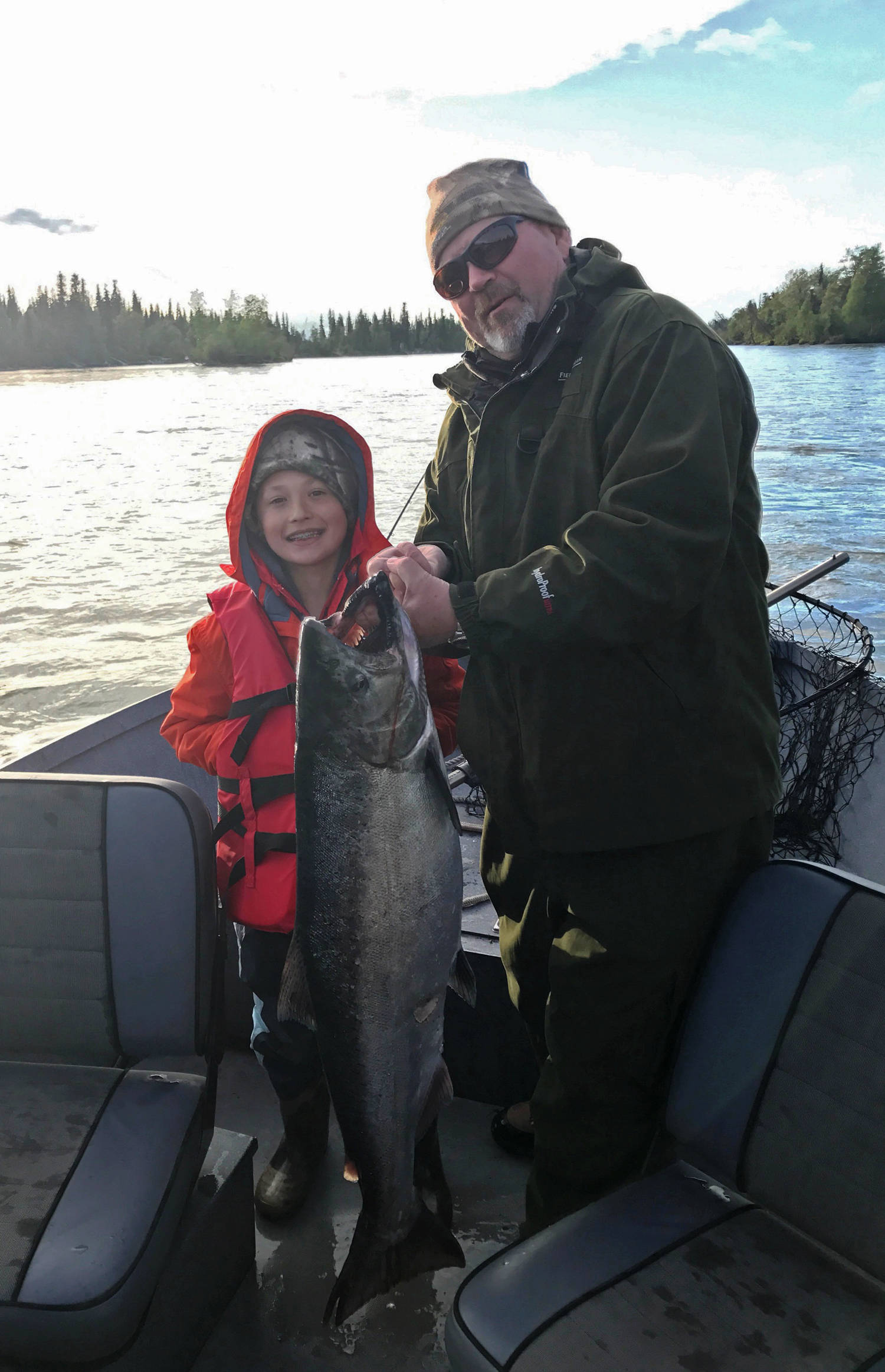Sunday morning’s opener at the confluence of the Russian River and Kenai River saw a lot of happy anglers.
By midmorning, fishermen of all ages were hooking into some of the famous sockeye salmon bound for the Russian River, a snow-fed tributary of the Kenai River. The daily bag limit for the confluence area and on the Russian River is three fish per day with six in possession, and many anglers were already packing out their fish before noon.
Sockeye hit the Russian River hard this year. As of Tuesday, 4,417 sockeye had passed the Alaska Department of Fish and Game’s weir on Lower Russian Lake, more than twice as many as by the same date in 2016.
The Russian River is separated into two distinct runs, demarcated on July 15. The early run is managed for an escapement goal of 22,000–42,000 fish, and the late run is managed for a run of 30,000 – 110,000 fish. The runs vary from year to year, both in size and timing. This year, it looks like the early run may have a high few days and then peter out, based on what’s coming up at Fish and Game’s king salmon sonar at river mile 14, said Jason Pawluk, the assistant area management biologist for the Division of Sportfish in Soldotna.
There are still fish congregating in the sanctuary of the Russian River confluence area, and the sonar registered some major pulses of fish headed up the river, with the peak still set to hit the area, he said.
“They’re there, and I really think any day now it’s going to be good,” he said. “I think people should still hold out hope that that fishery is going to be good.”
For anglers willing to hike, fishing could be better up in the clear waters of the Russian River itself, where there’s less water for the fish to disperse and less sediment clouding it, he said. As the weather warms, anglers may have the most luck going early in the morning as the overnight fish make their run or in the cooler parts of the day, or shadier parts of the stream with cooler water, he said.
“I think that’s the key to the Russian — whether you’re in the clear water or right below the confluence in the Kenai,” he said. “Early morning and late evening are your best bets … in sunny conditions (the fish) are probably not going to make a run up the Russian in the heat of the day.”
Down on the lower Kenai, the early run of king salmon is in full swing, with more fish returning than in many recent years. As of Tuesday, 4,589 large fish had passed Fish and Game’s sonar, still ahead of the count of all fish on the same date in 2016. Managers shoot for an escapement goal of between 3,900 and 6,600 large fish, which are defined as fish longer than 75 cm from mid-eye to tail fork or 34 inches in total length.
With the run about halfway through, based on historical run timing estimates, the managers decided to increase the maximum size allowed for retention until June 30 for fish taken between the mouth of the river and Slikok Creek, according to an emergency order issued Monday. The 36-inch limit is still in place for fish taken between Slikok Creek and Skilak Lake.
Anglers are now allowed to retain fish less than 46 inches long, an increase of 10 inches from the previous 36-inch size limit. The increase bumps up the available harvest of the run from about 28 percent to about 83 percent, as reported by the Clarion.
However, fishing conditions on the Kenai have declined in the past several days, as the Killey River has begun its annual process of clouding the water with sediment. The upper Kenai River still has a relatively low water level with good clarity, but down below, the visibility has declined, worsening fishing conditions, Pawluk said. Effort has still been fairly low and success has dropped, he said.
On the other hand, king salmon anglers on the Kasilof River have been consistently bringing in fish. The Kasilof hosts a run of both wild and hatchery king salmon, with varying rules on retention based on the day of the week, but logbook data shows guided trips are averaging between one and four kings per trip, Pawluk said. Kings aren’t enumerated on the Kasilof, so Fish and Game doesn’t have absolute numbers on the run there.
“Kasilof fishing, I would classify it as excellent for kings,” he said.
For fishermen wanting to stay away from the busy salmon fishing spots, lake fishing is reportedly good for trout on the Kenai Peninsula’s many lakes. Hidden Lake on Skilak Loop Road is a popular spot for lake trout, and the Swanson River Road lakes have been reportedly productive, according to Fish and Game’s weekly sportfishing report for the central peninsula. The trout fishing closure on the upper Kenai River and its tributaries ended June 11, so anglers can also now retain rainbow trout and Dolly Varden less than 16 inches long.
Personal-use gillnetting also opens at the mouth of the Kasilof River on Thursday. Alaskans can use a single set gillnet to fish for sockeye and king salmon for a week from the beaches for a mile north and a mile south of the river mouth.
Reach Elizabeth Earl at elizabeth.earl@peninsulaclarion.com.

